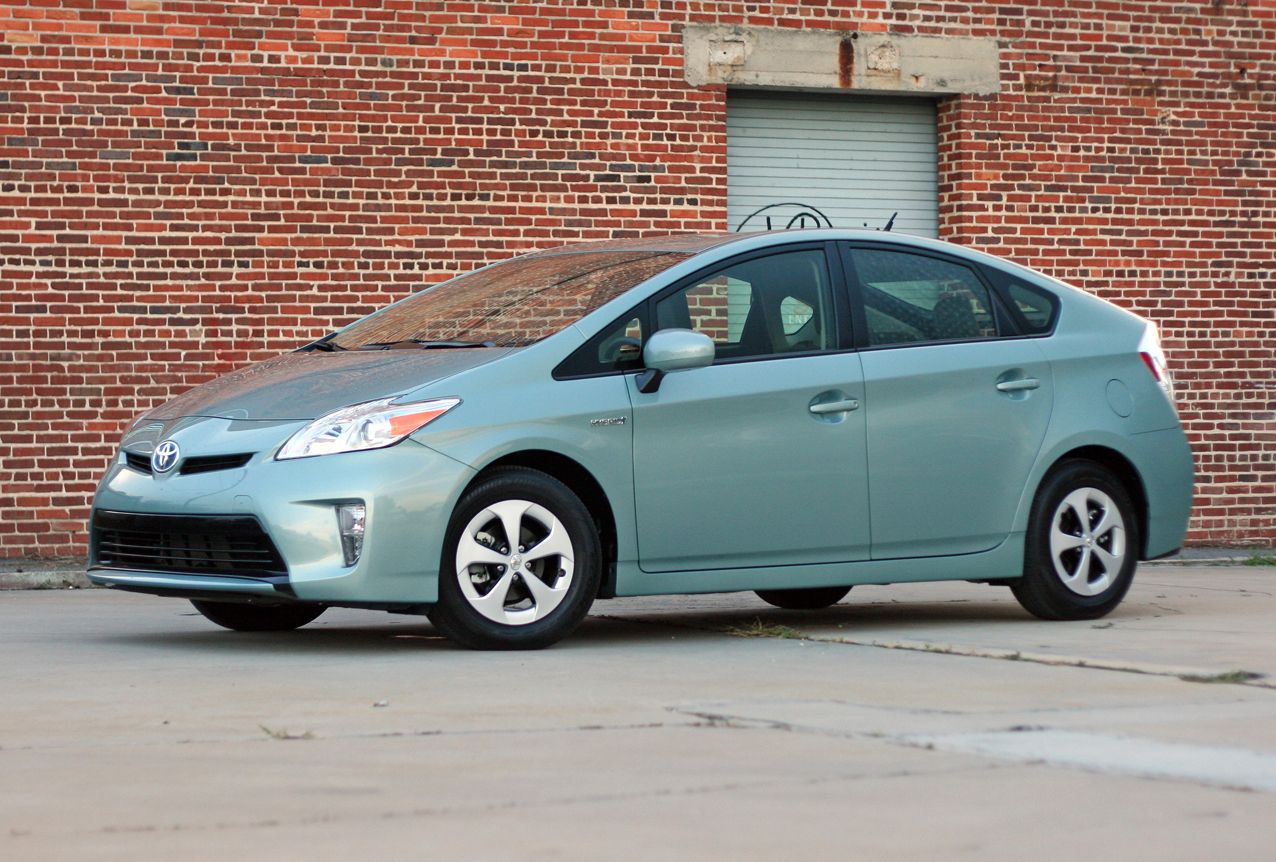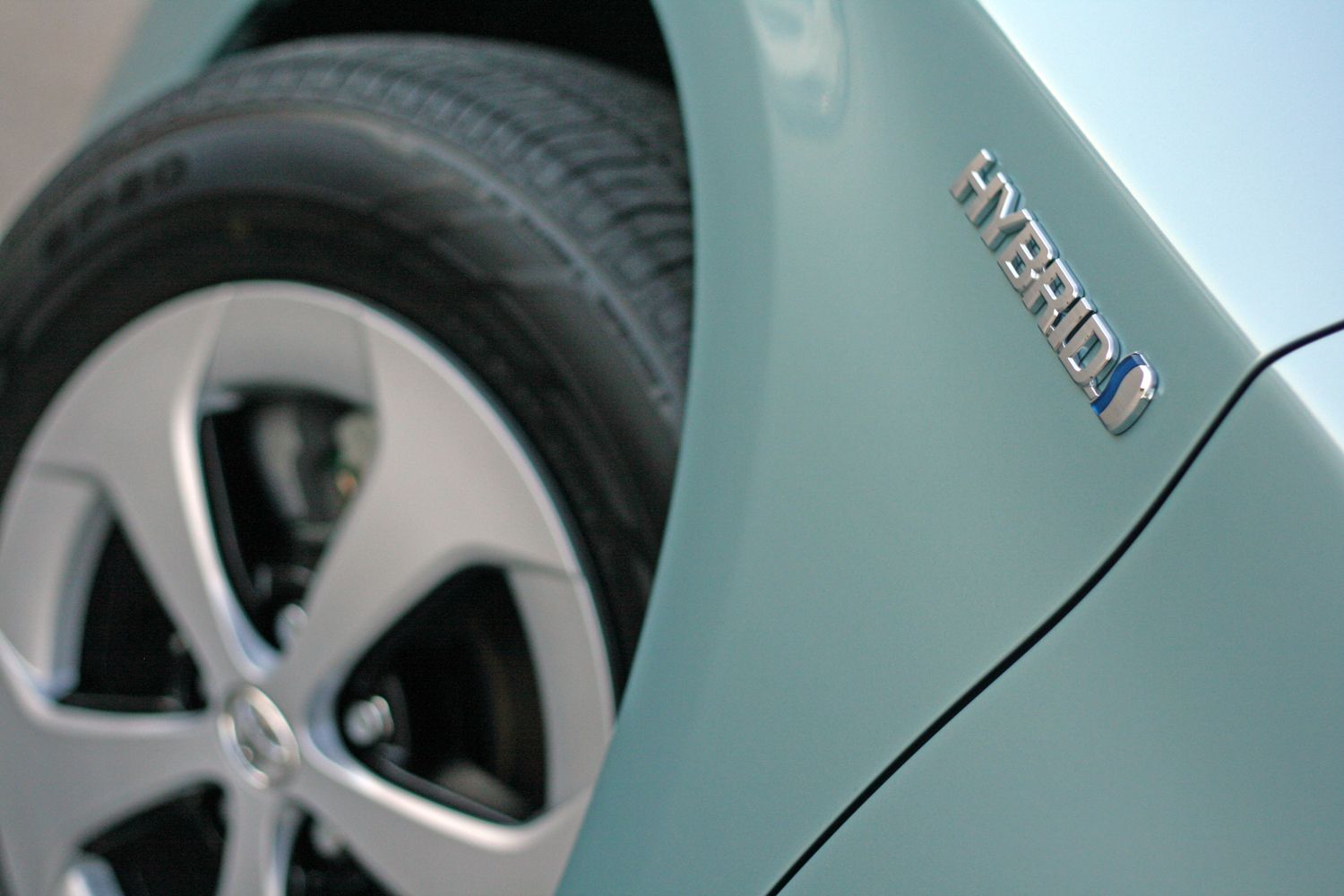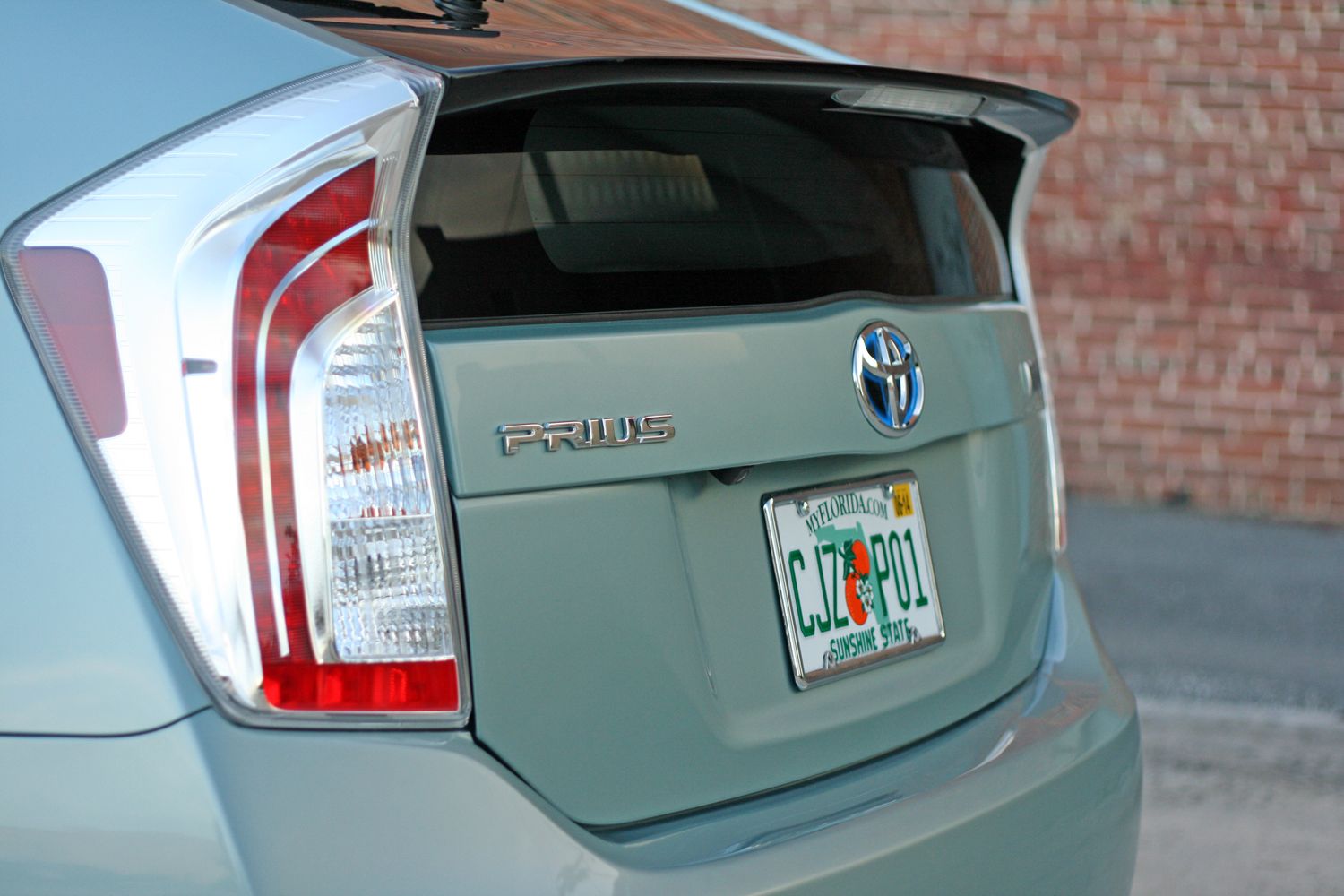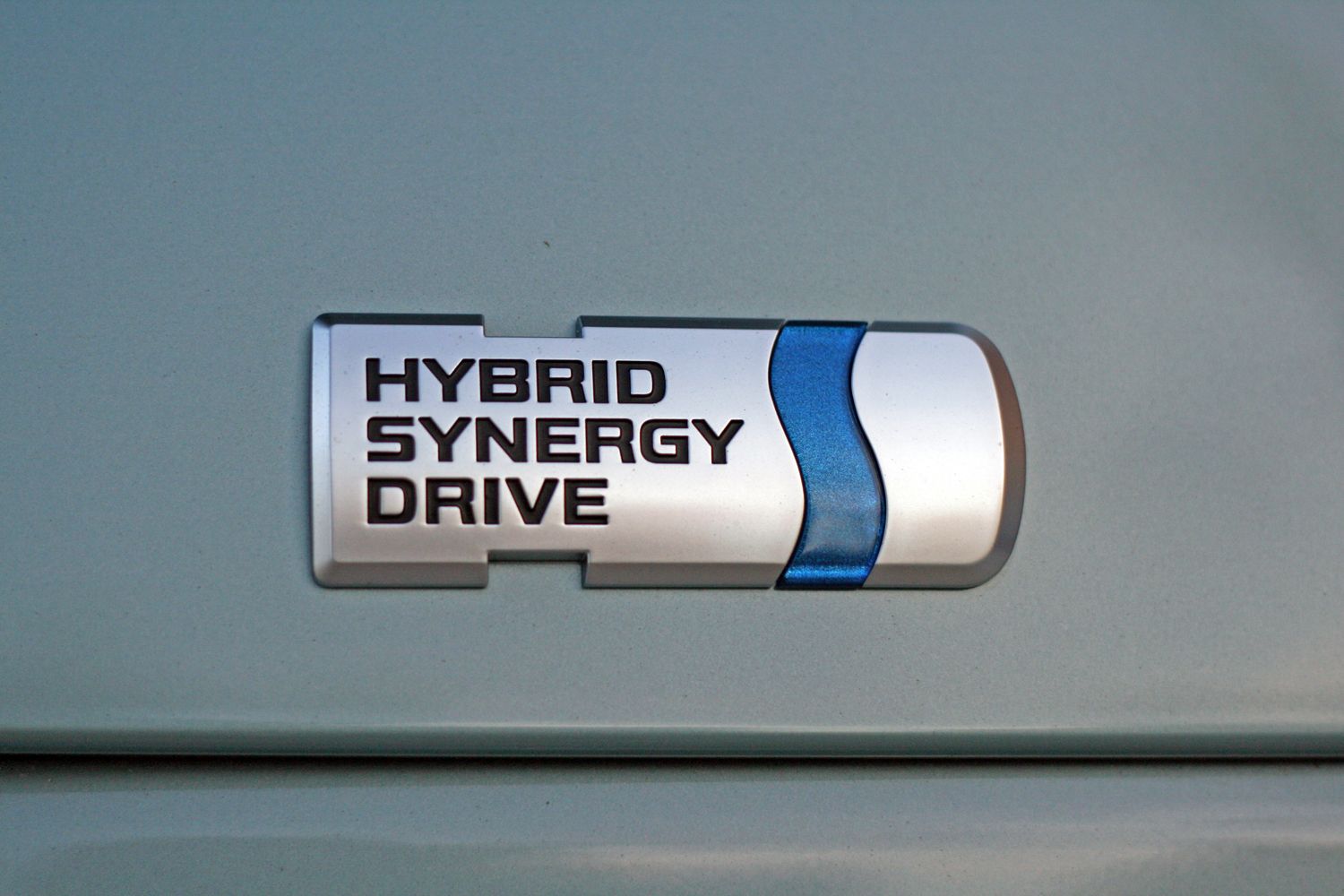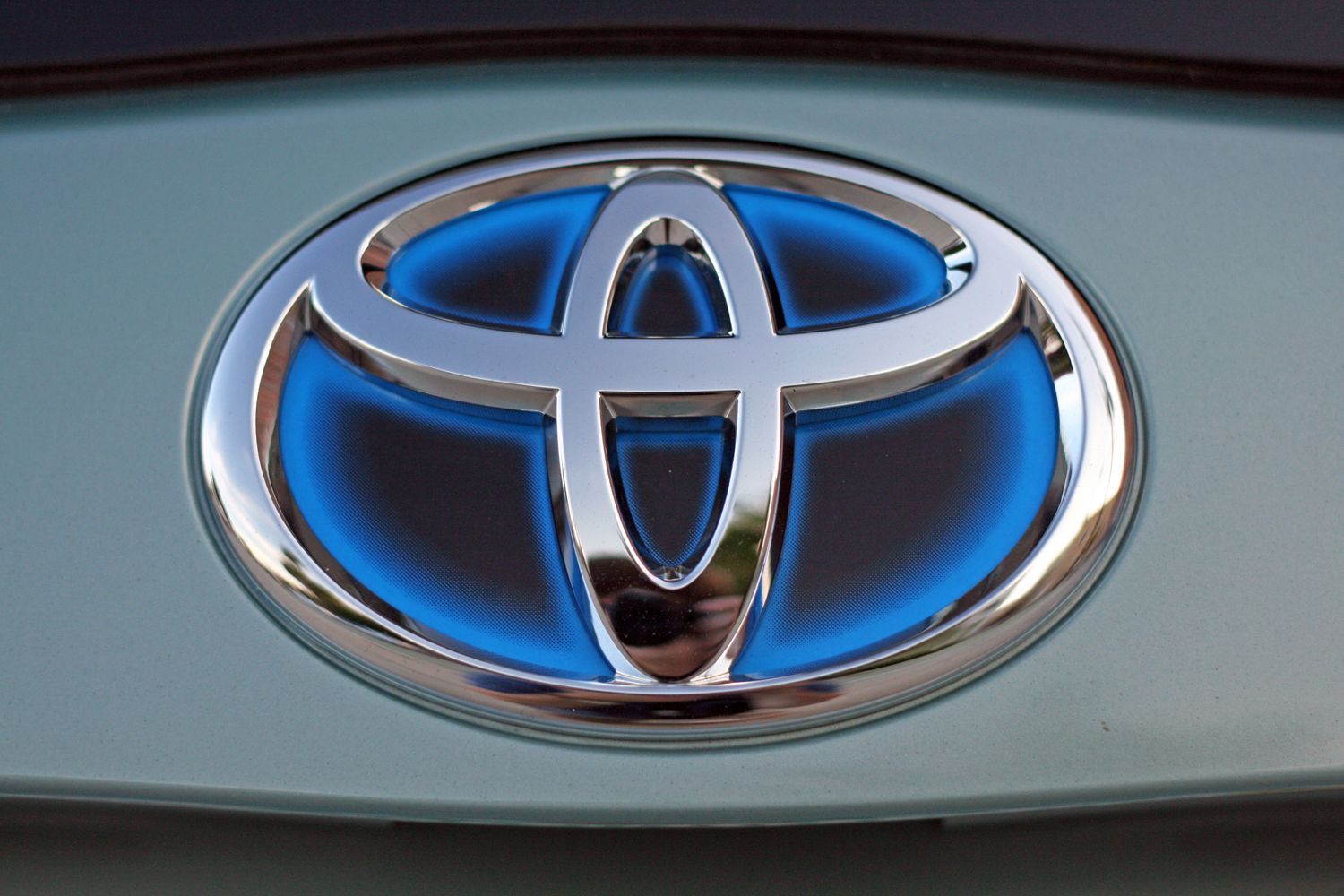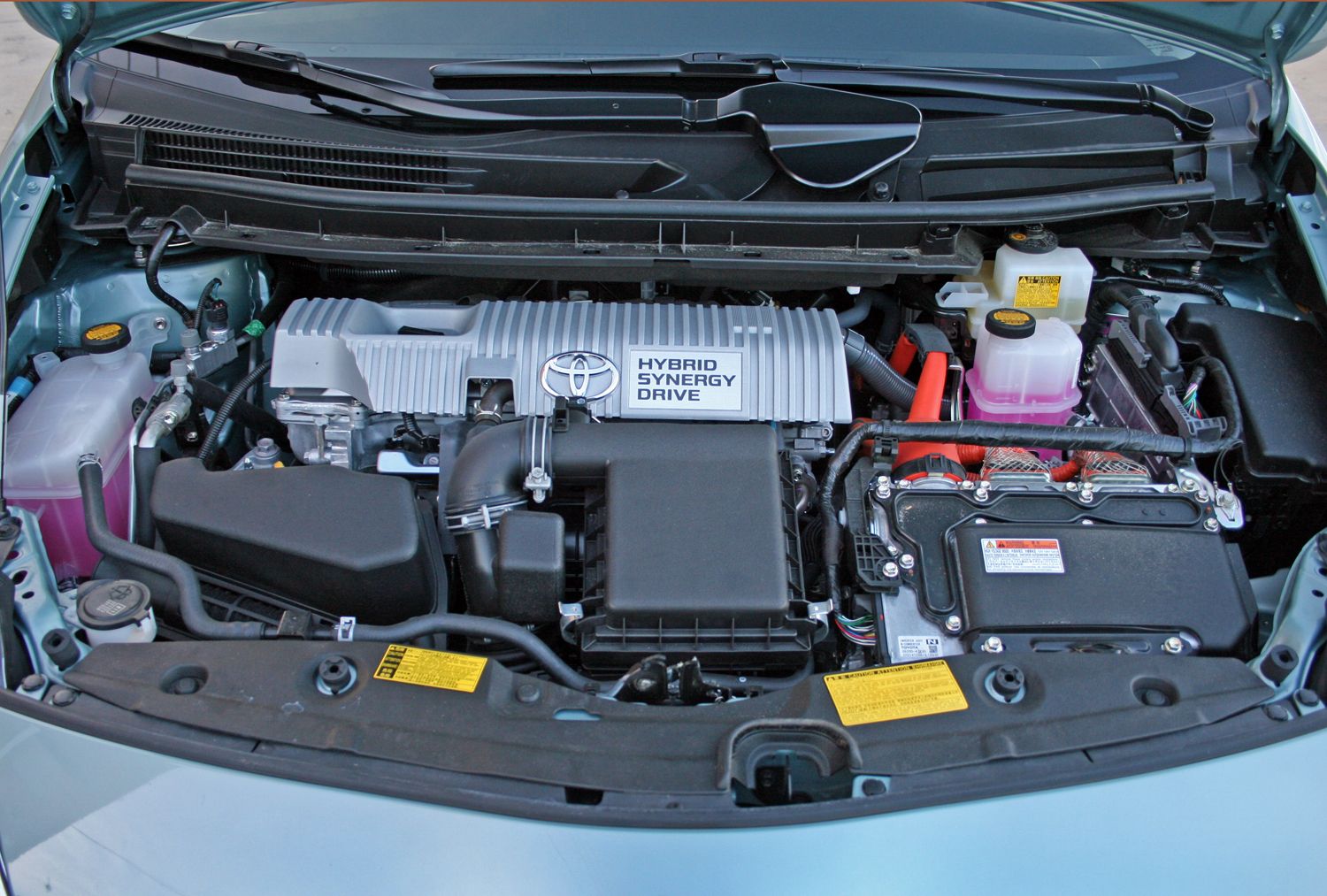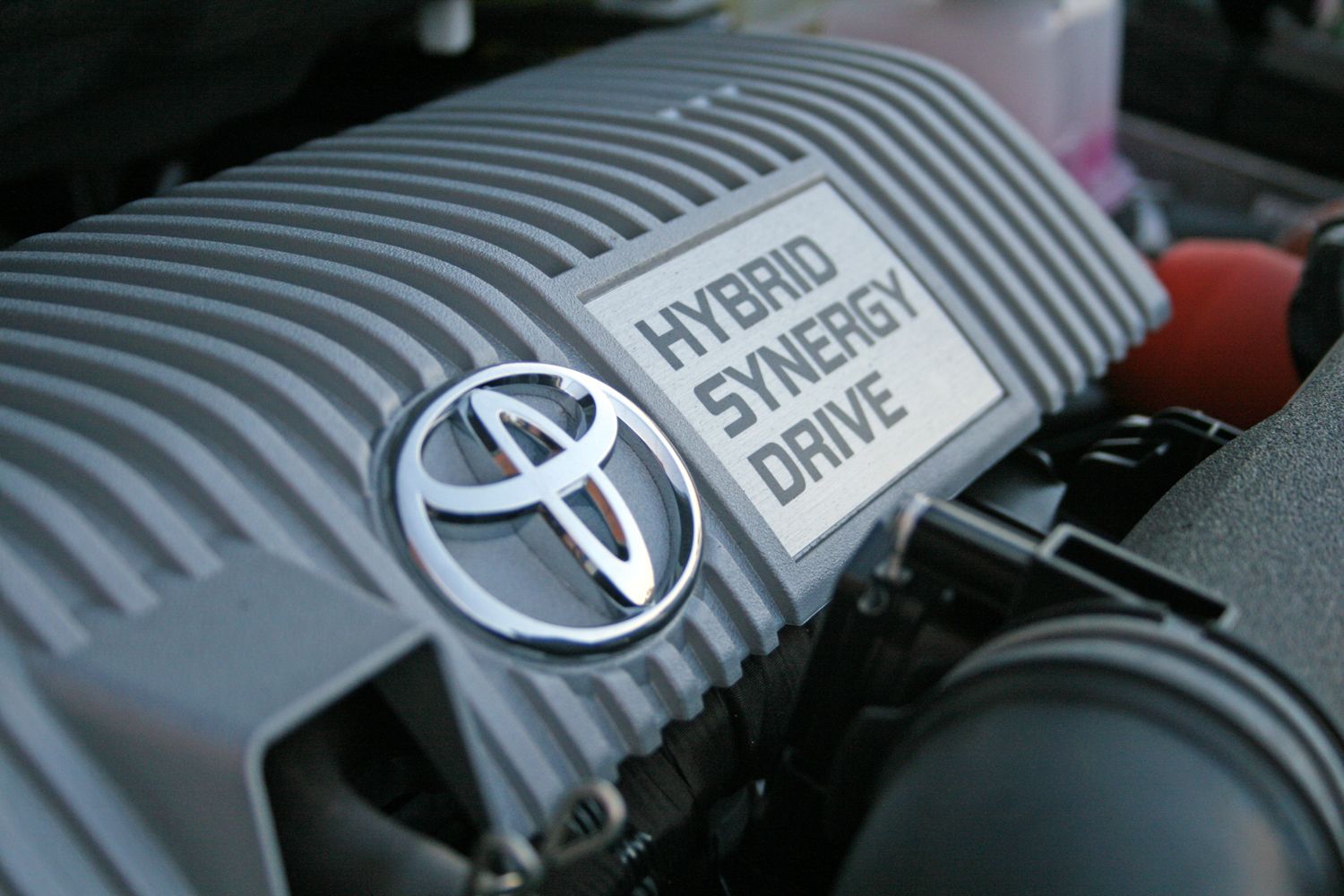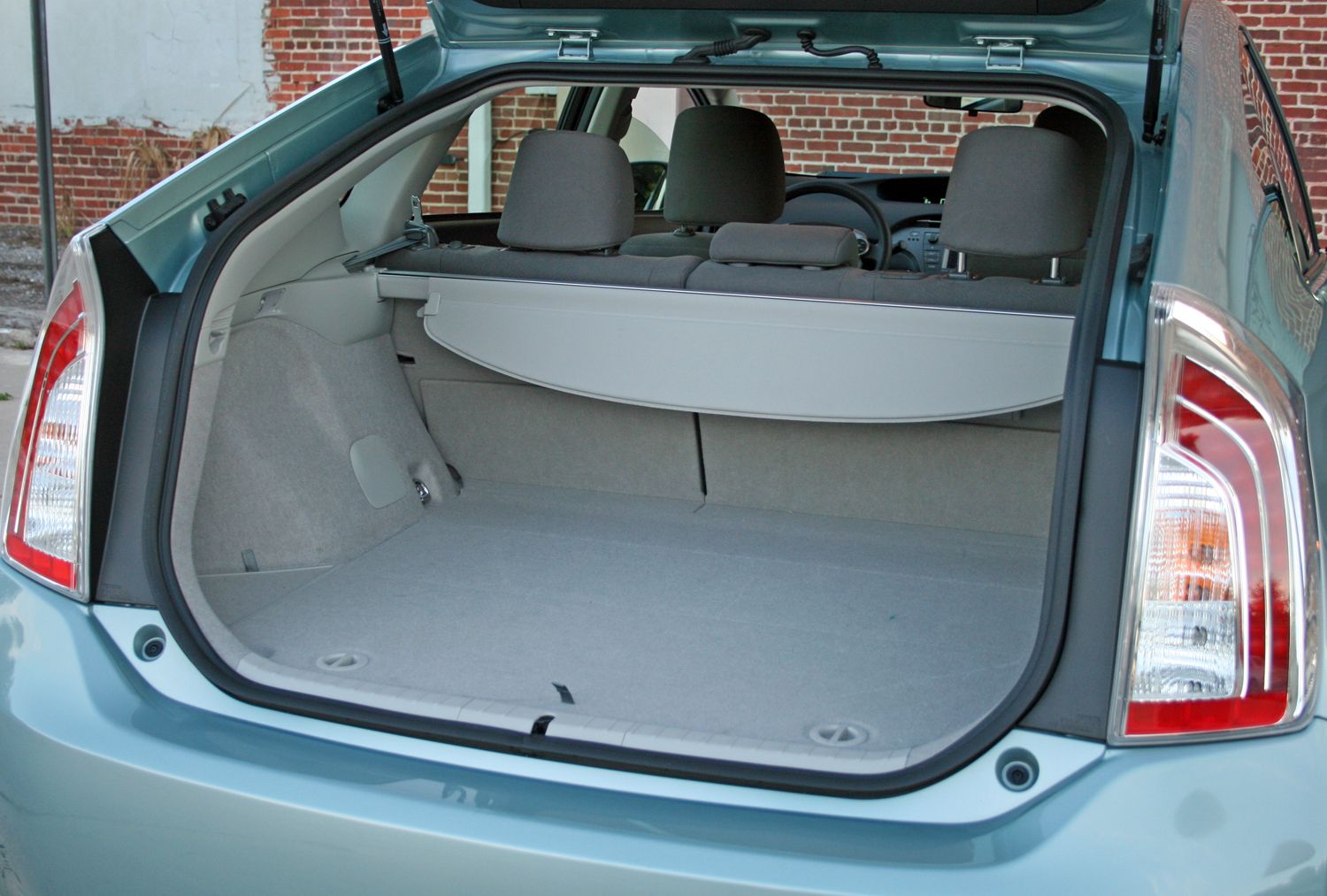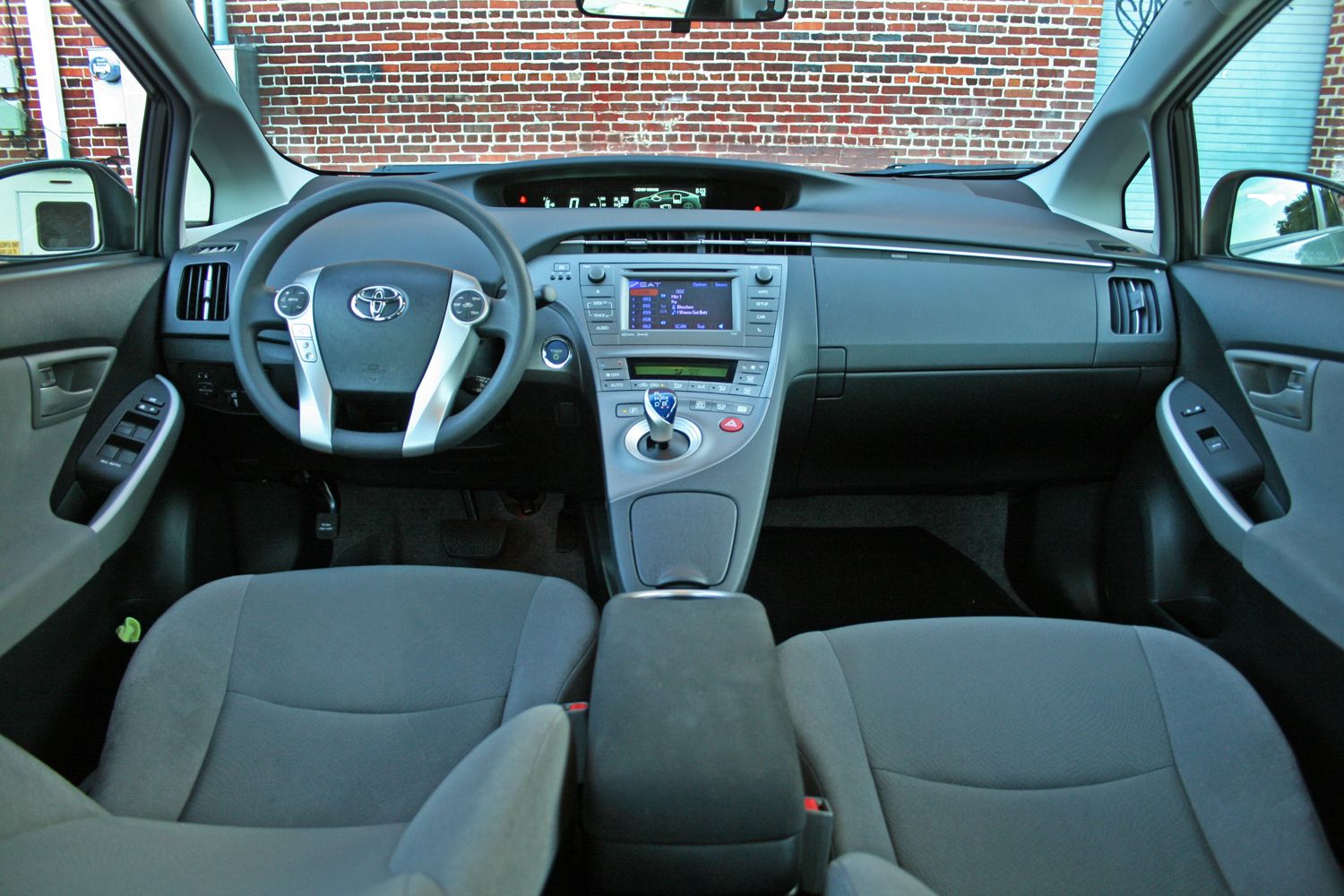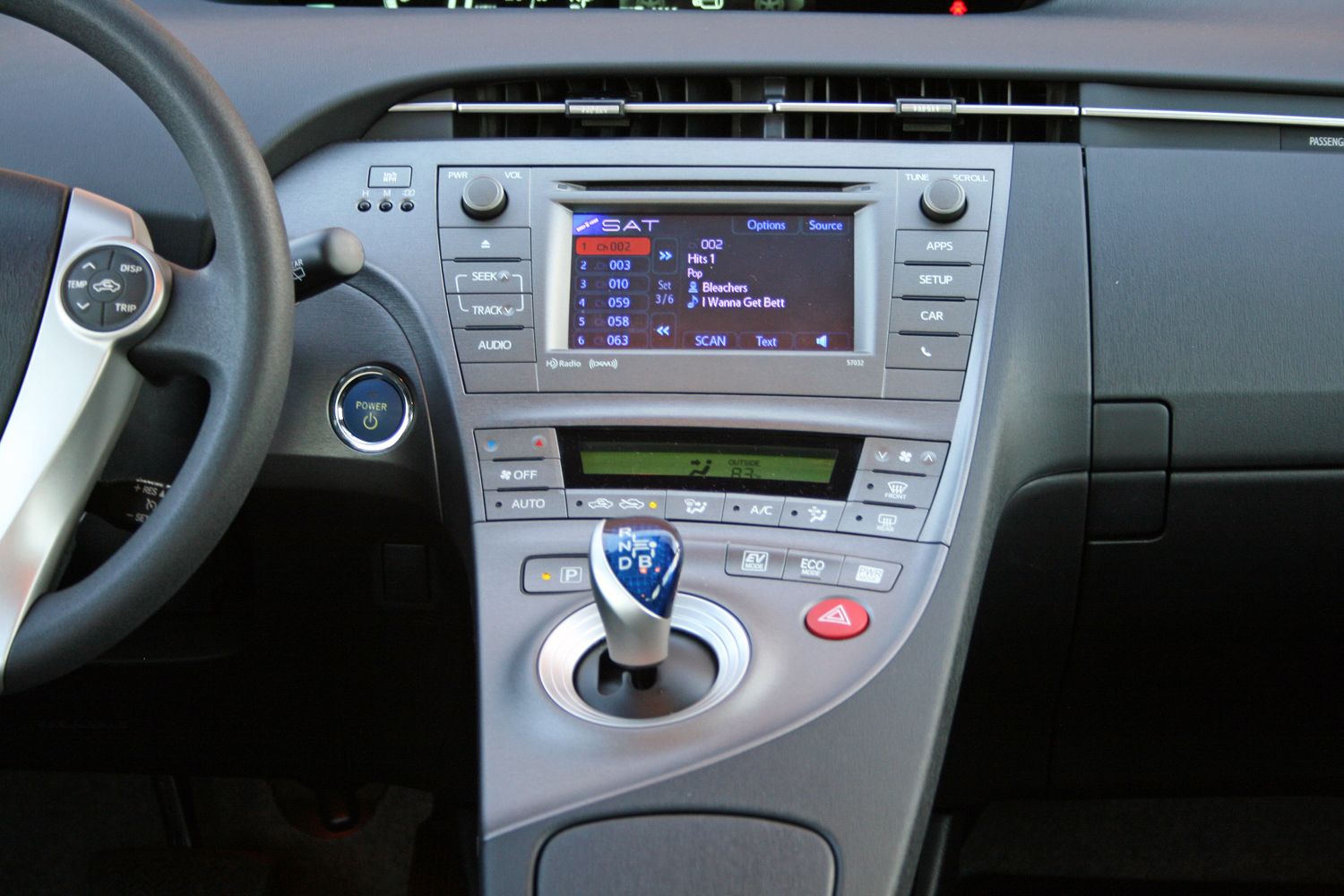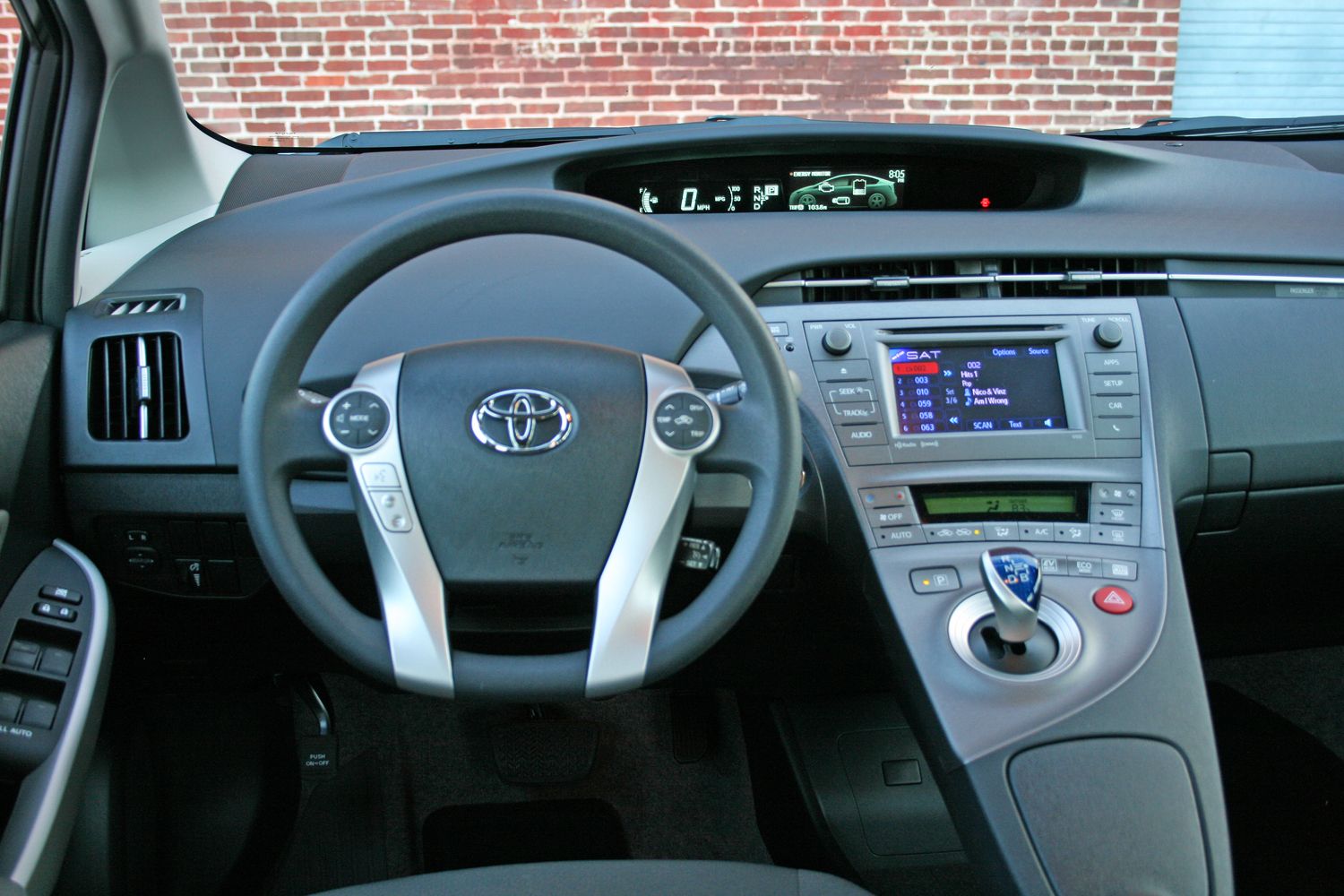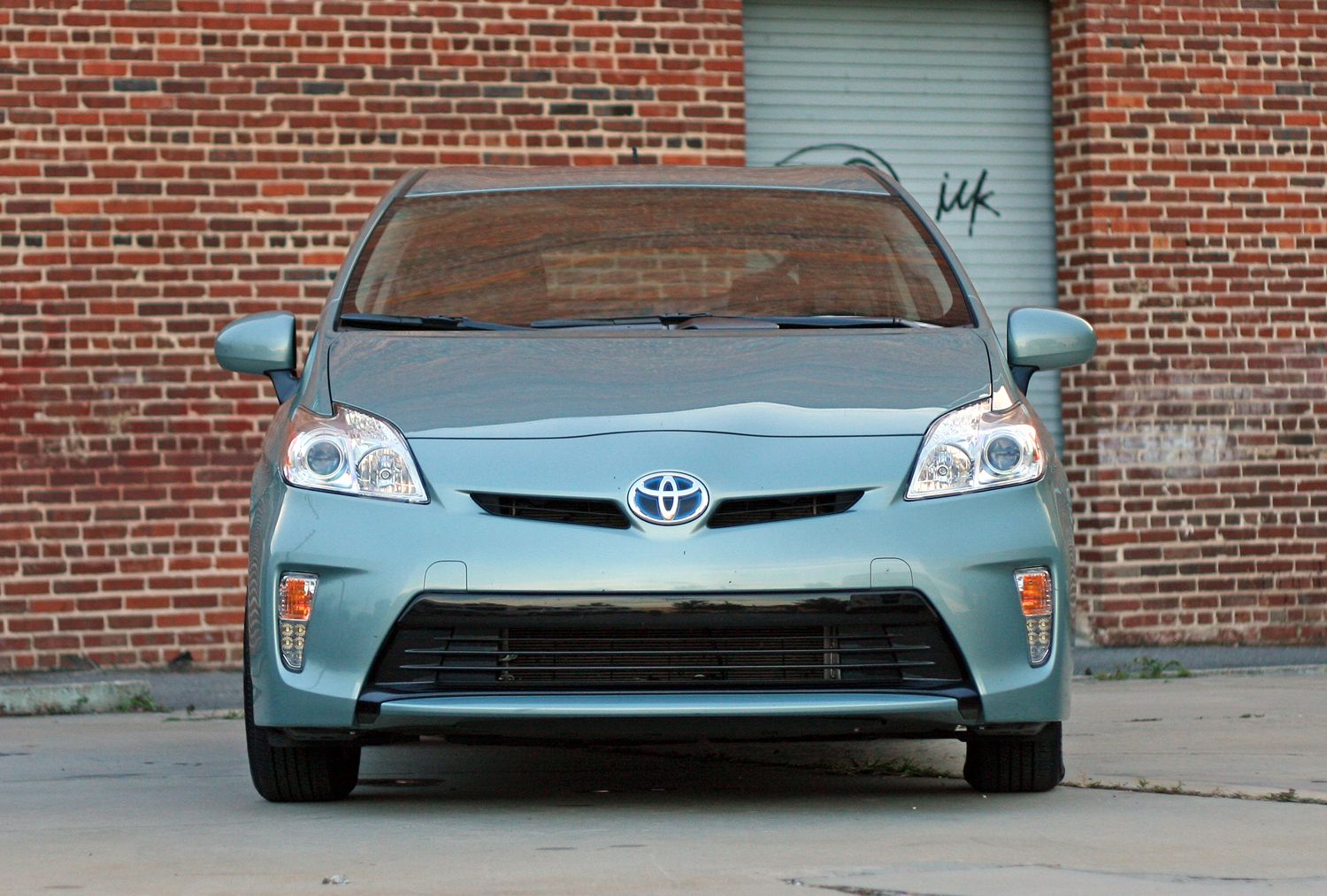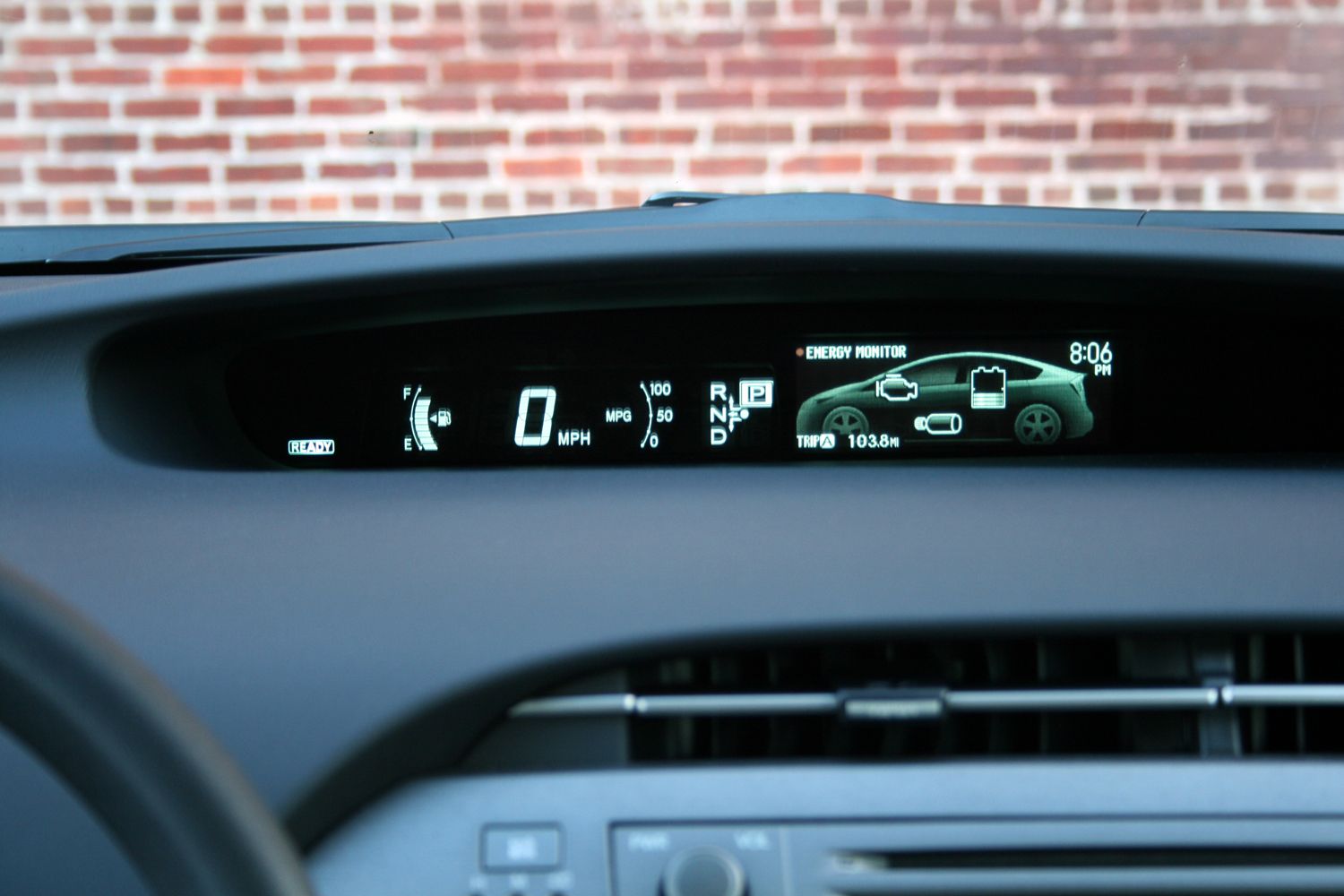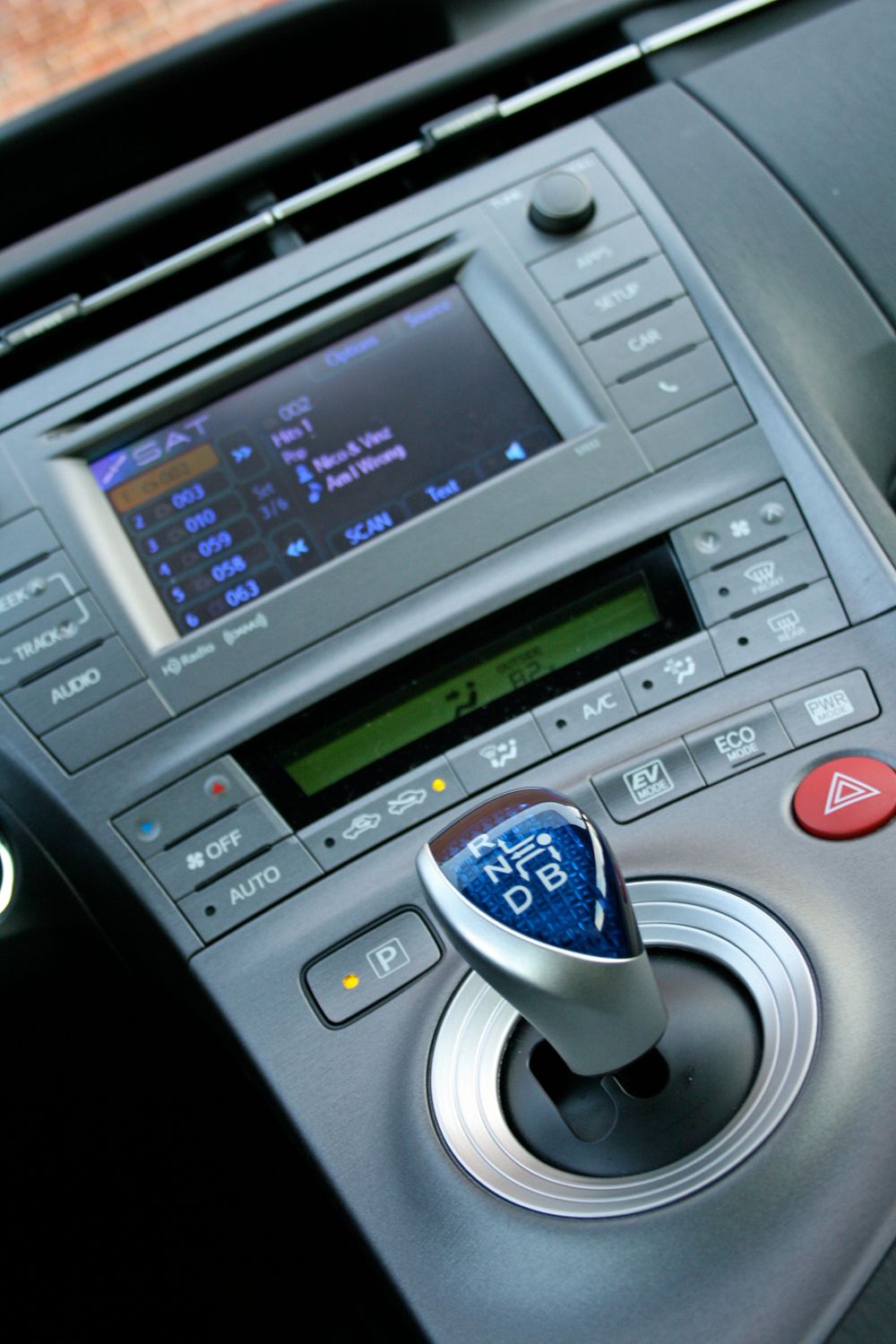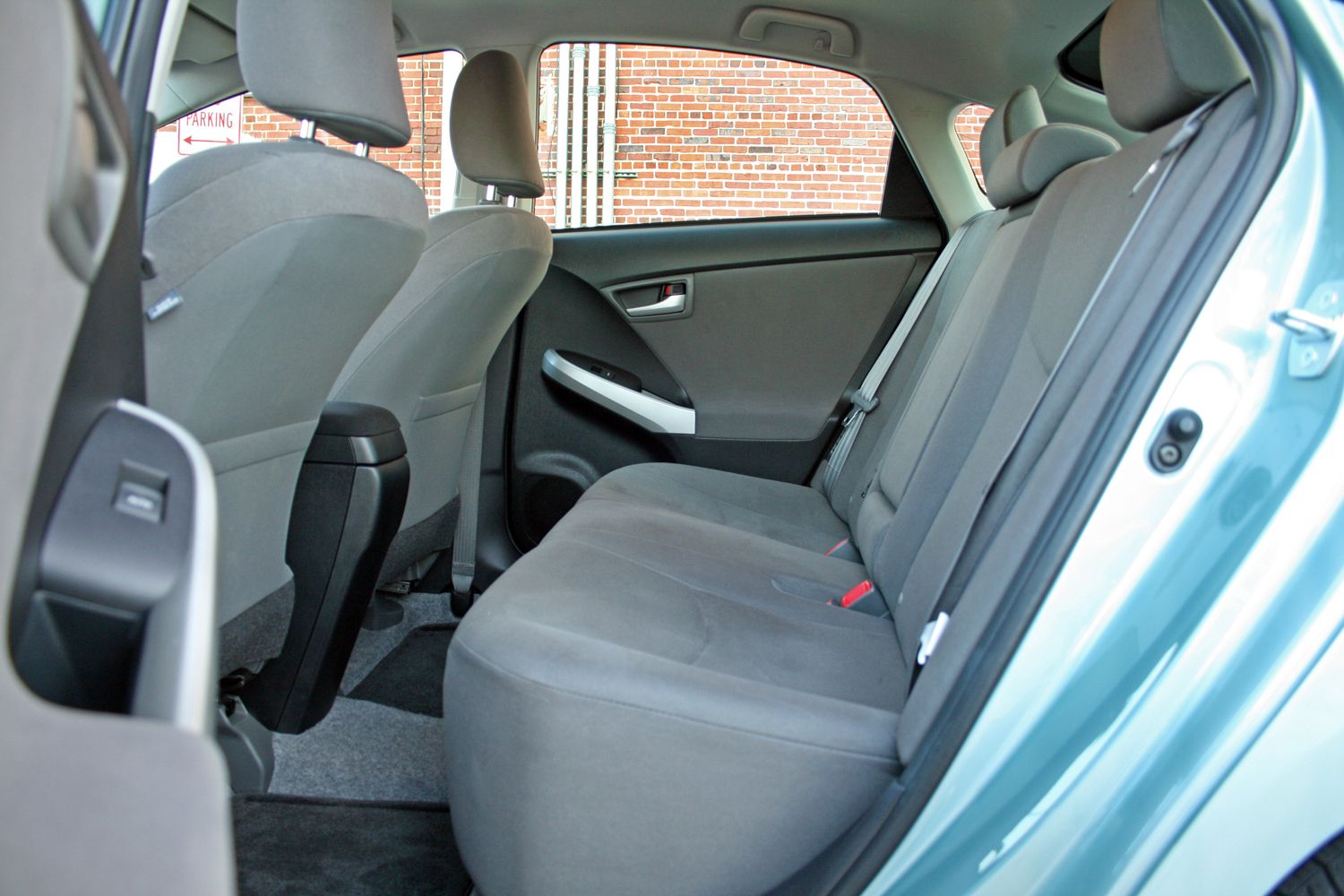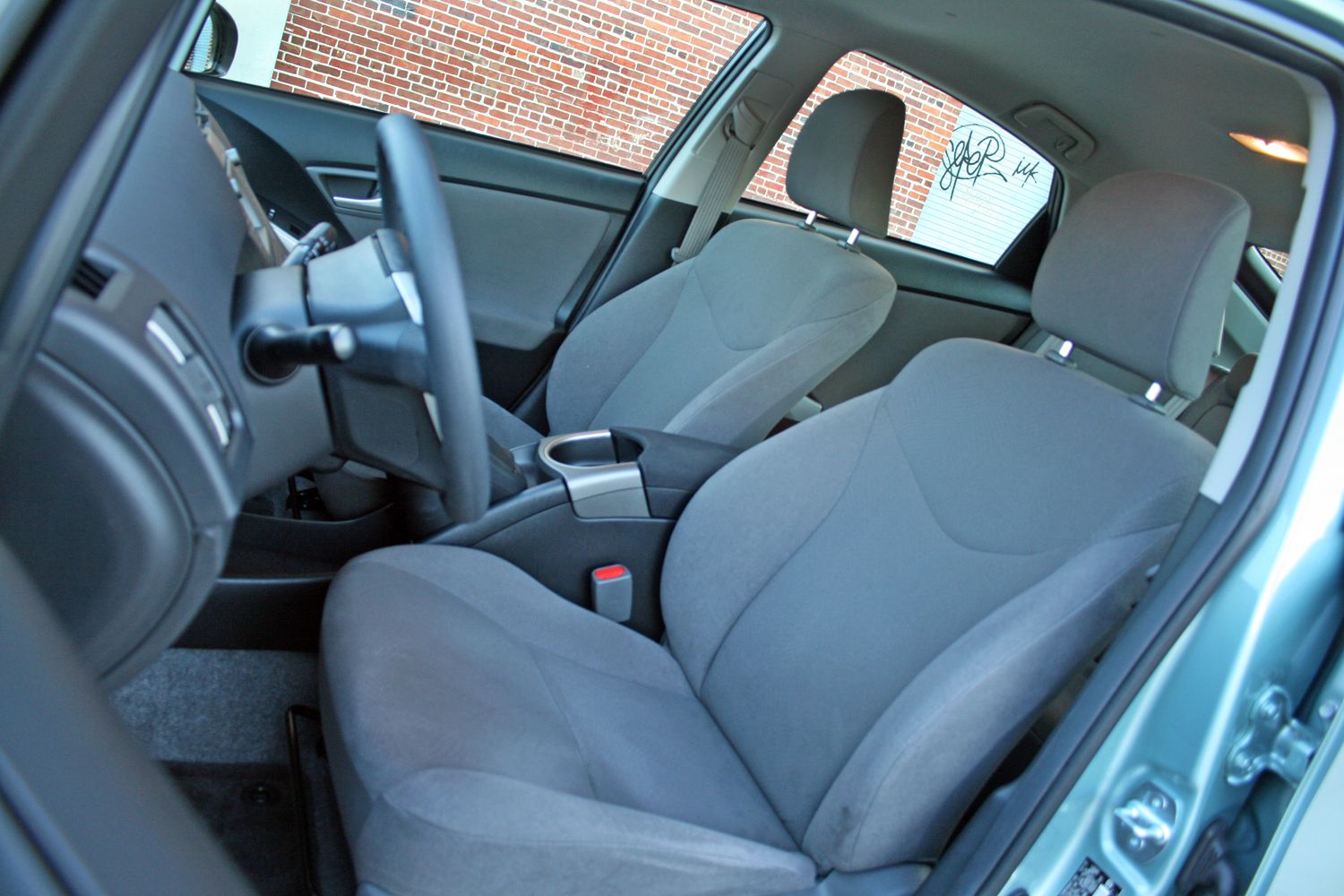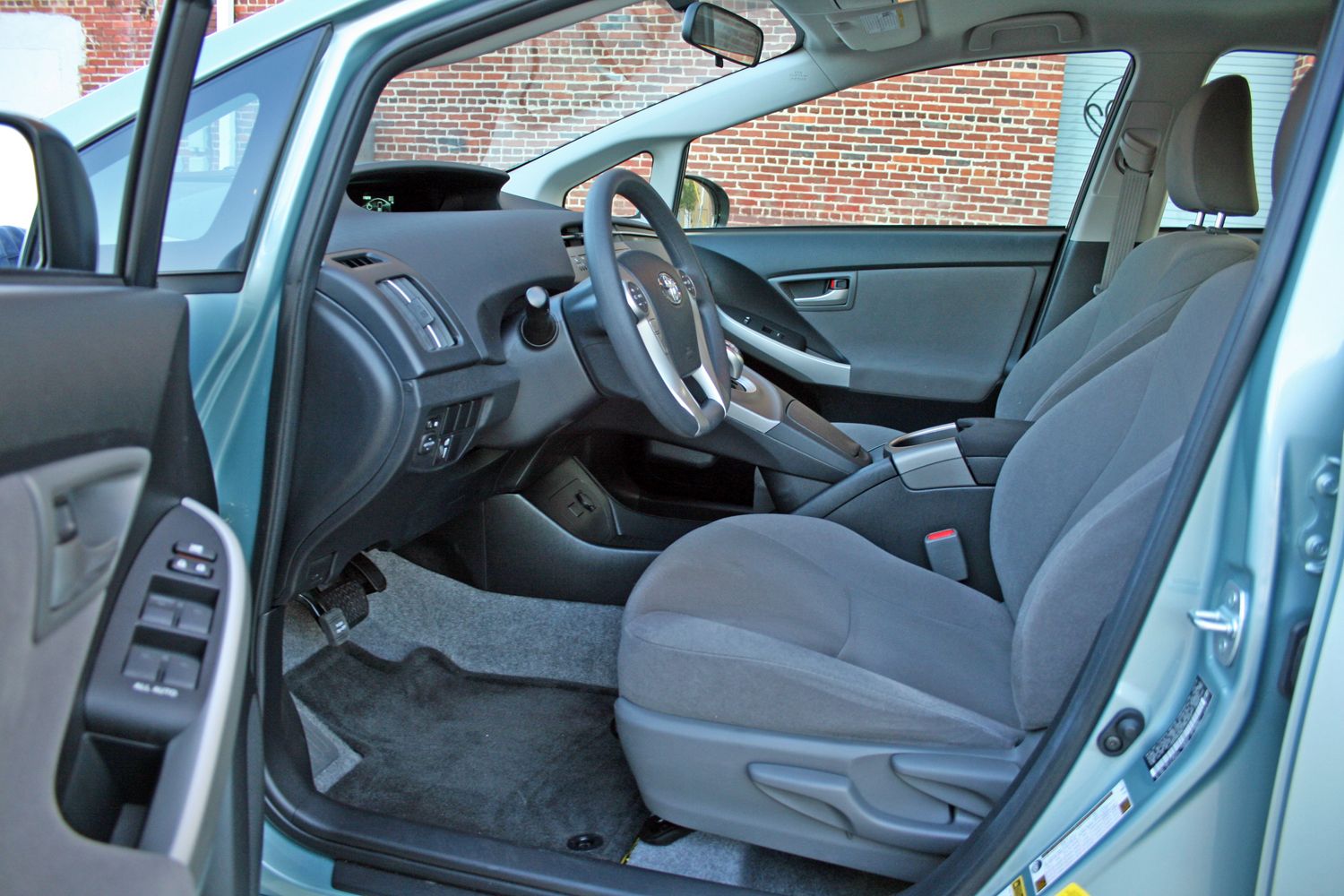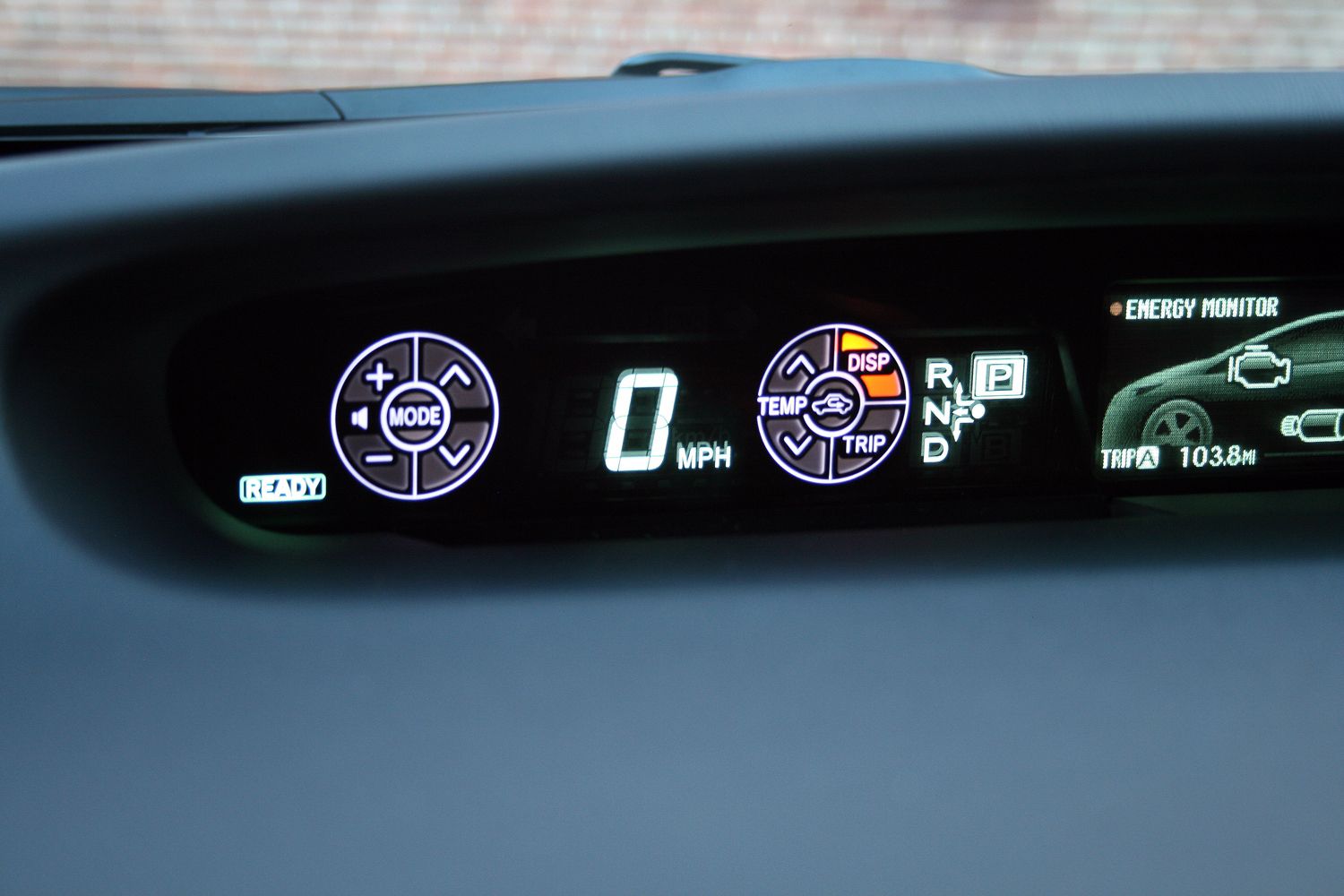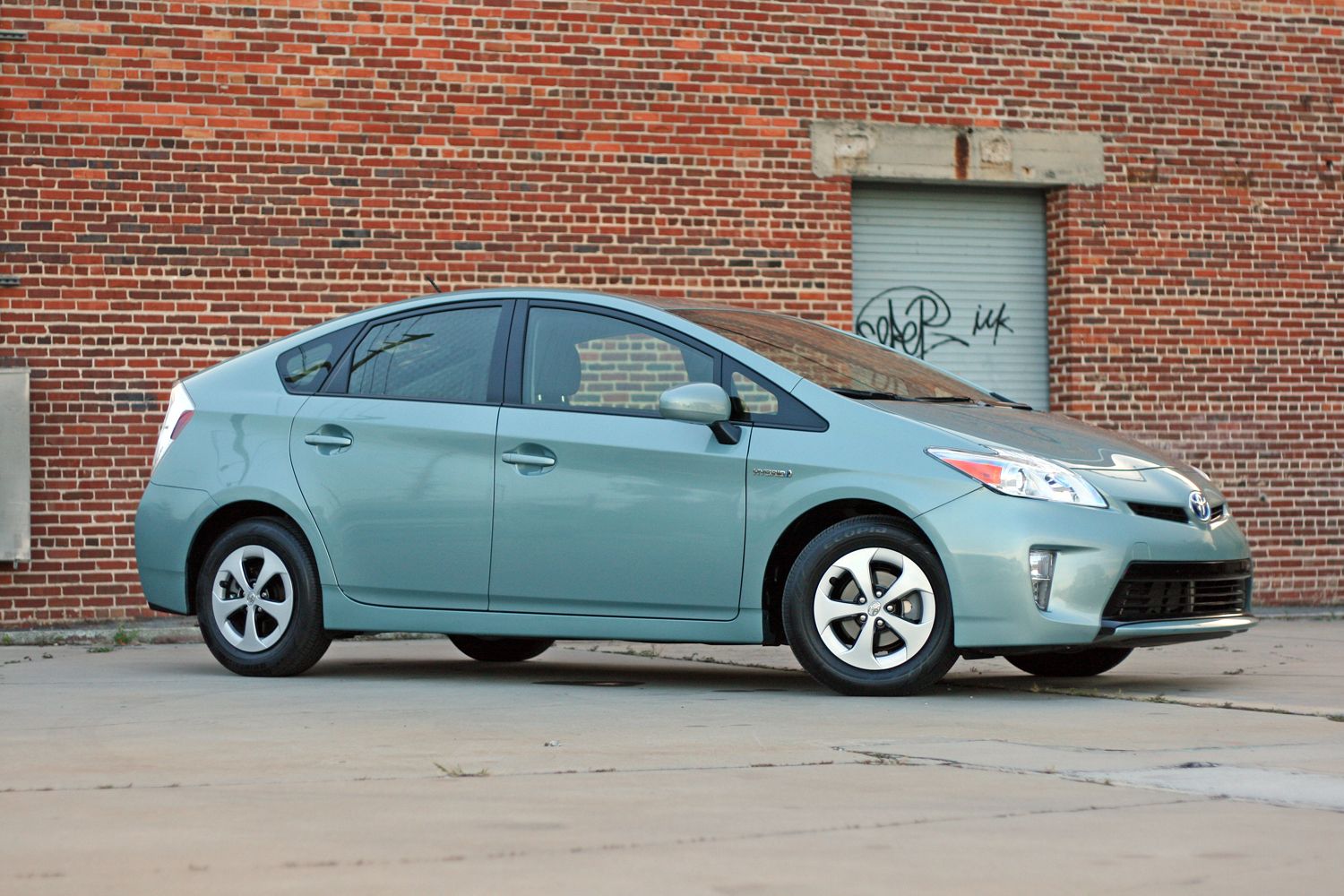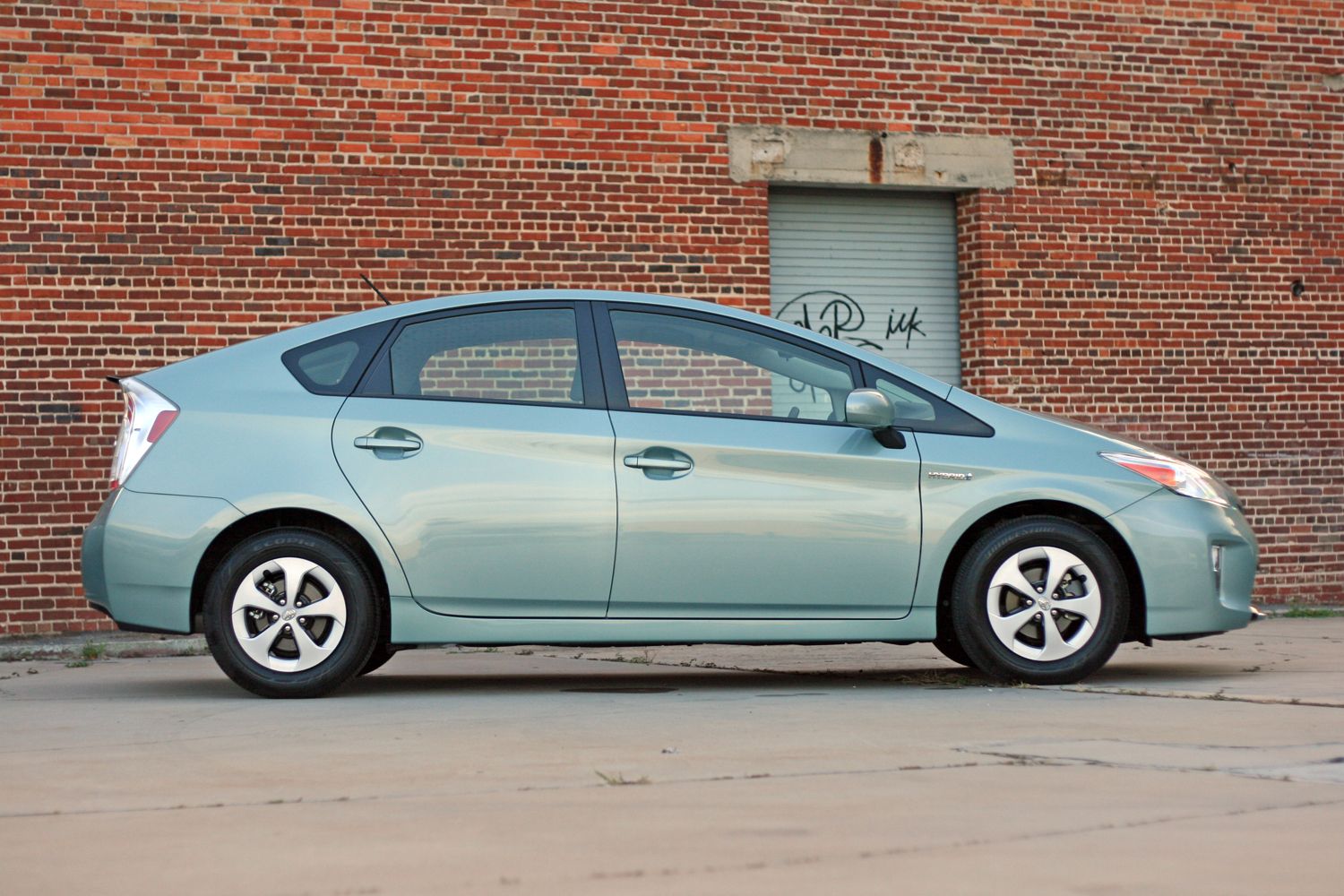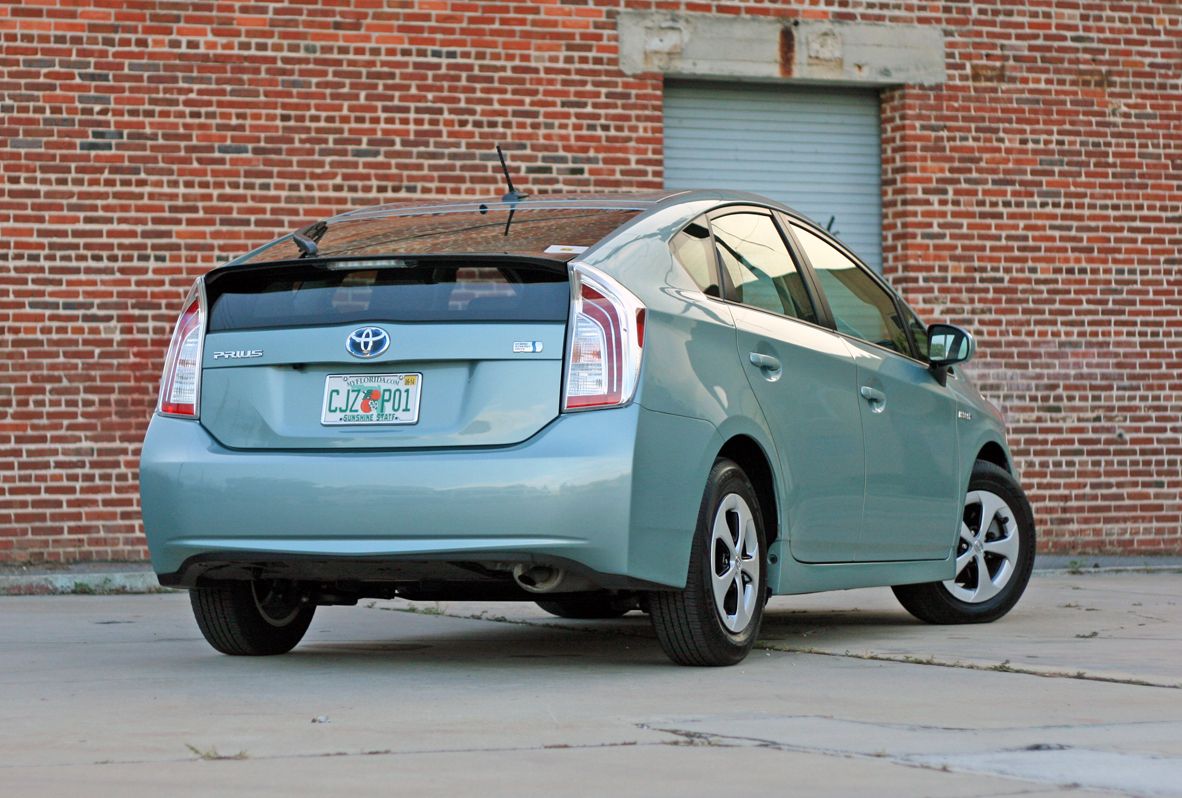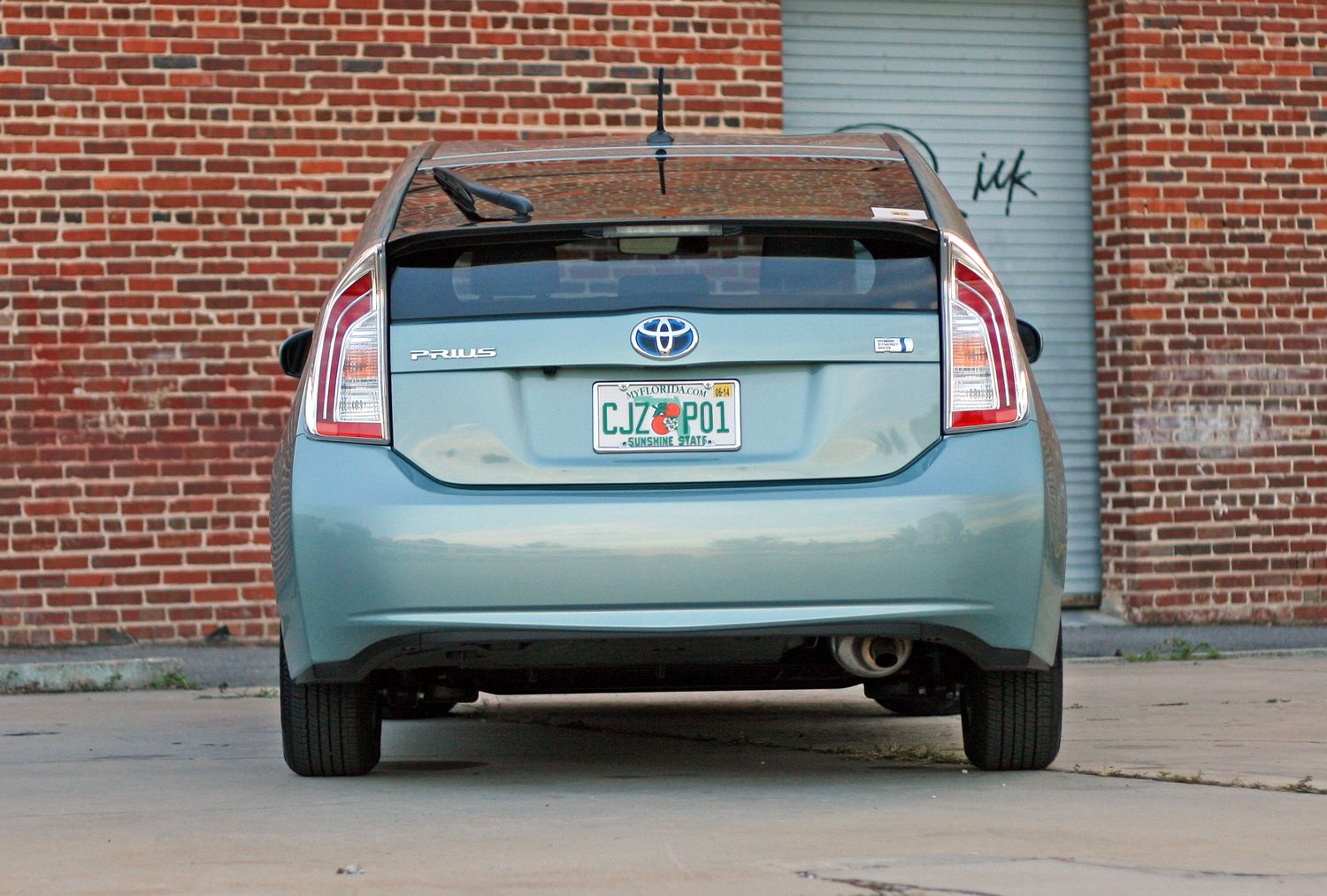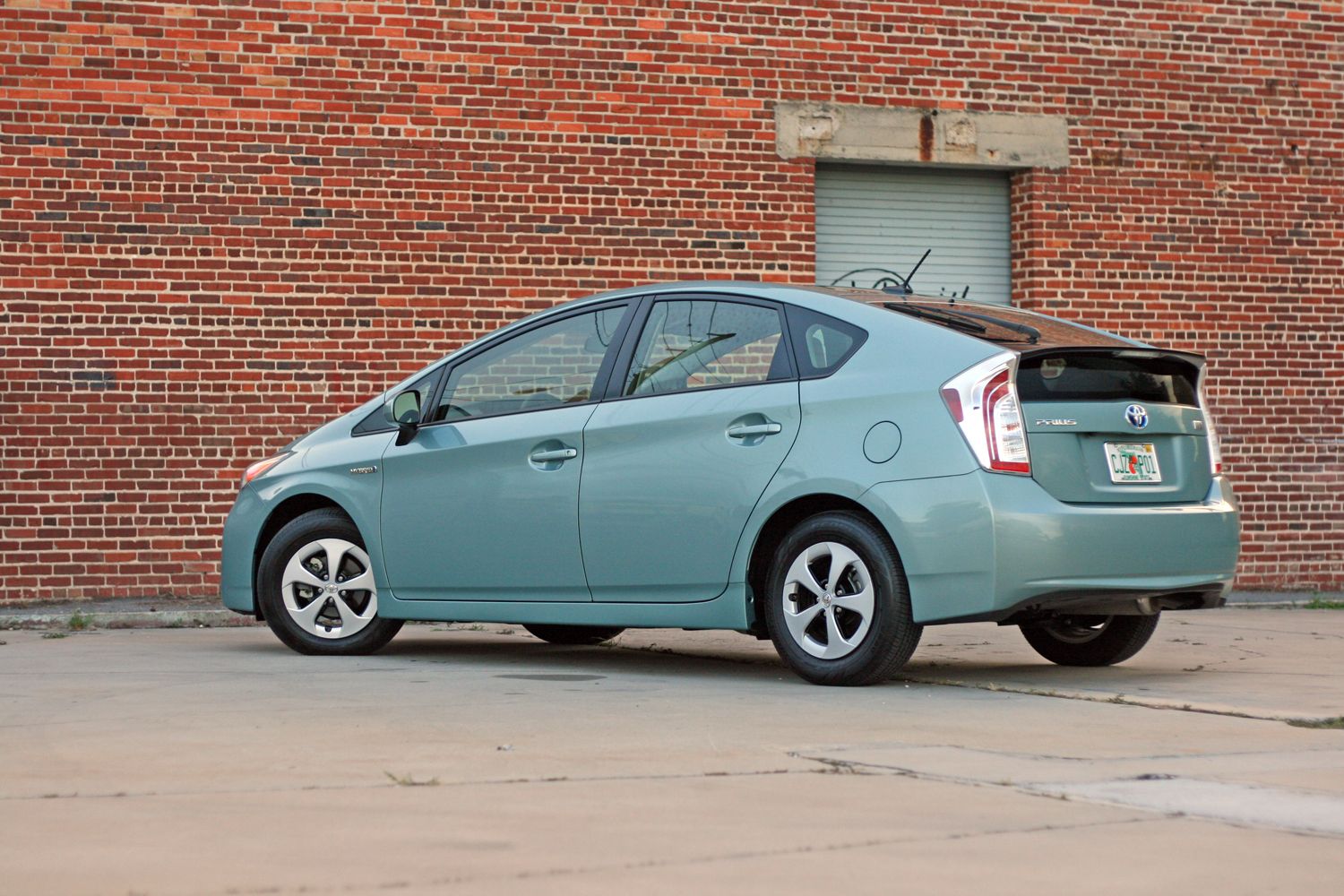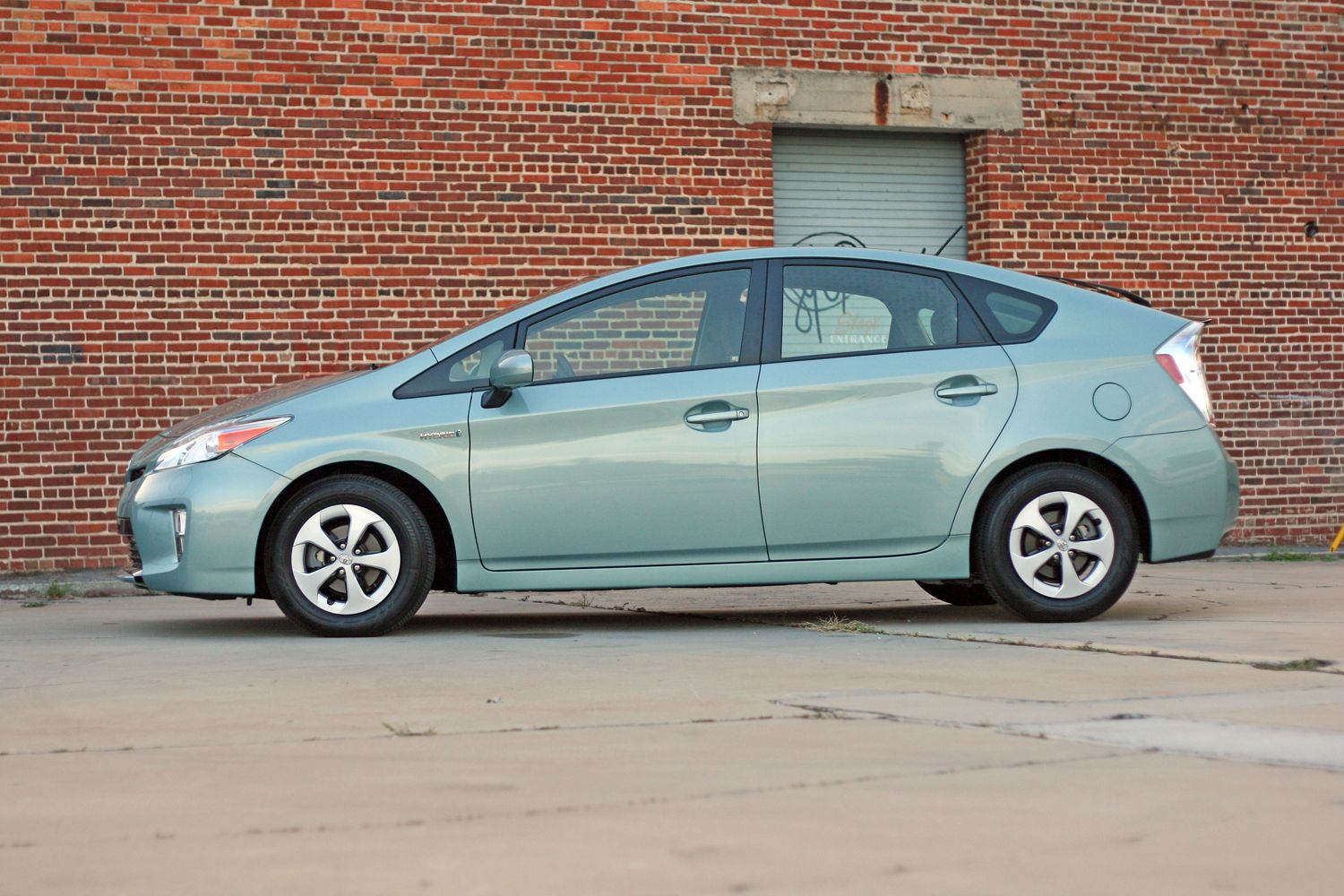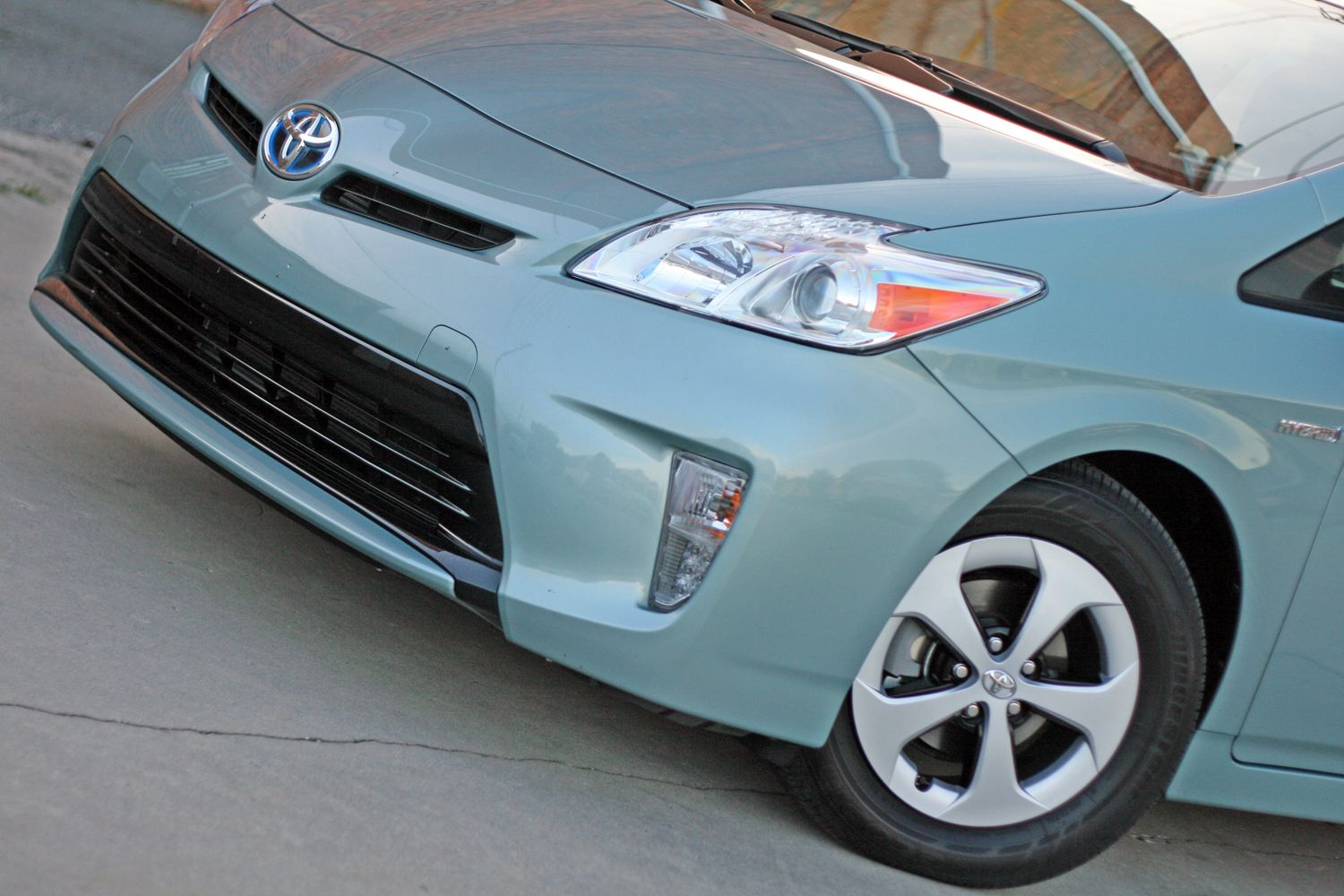The original Prius hit the streets of America back in 2000 with its Corolla->ke1039-like looks and a funky hybrid-electric->ke147 drive that was unlike anything else on U.S. roads except the two-seat Honda Insight. That first-generation Prius was replaced in 2004 with the familiar hunchback turtle look we’re all used to. The second generation is where Toyota->ke88 really gained ground with hybrid->ke147 sales, moving over 600,000 cars before the third-generation Prius took over in 2009. With the new model, the Prius gained a few reshaped exterior panels and a more futuristic interior while retaining is stellar fuel economy numbers. Since then, Toyota has moved over 710,000 third-gen cars.
I recently found myself behind the wheel of a 2014 Toyota Prius->ke231 with the “Three Model” option package. One level up from the base model my tester came equipped with some nice features like a 6.1-inch touch screen in the center dash, Sirius XM radio, navigation, Toyota’s smart key entry and start system, and power windows. But despite those features, the car still felt very basic. Cloth seats, a rubber steering wheel, manual seats, and hard plastics everywhere kept the car feeling rather down-market.
Besides the interior’s shortcomings, the Prius performed just as you’d expect: slow and efficient. So does the car live up to all the hype that’s been following it all these years? Click past the jump to find out.
Click past the jump for the full review of the 2014 Toyota Prius
2014 Toyota Prius - Driven
- Make: Array
- Model: 2014 Toyota Prius - Driven
- Engine/Motor: inline-4
- Horsepower: 98
- Torque: 105
- Transmission: CVT
- [do not use] Vehicle Model: Array
TopSpeed Garage Video Review
Exterior
The Prius’ body shares that familiar look with Prii dating back to 2004 – and yes, Prii is the official pluralization of Prius. That rounded roof and slopping front contributes to the car’s overall aerodynamics and generous headroom. The rear hatch area hasn’t changed much either, offering a respectable amount of cargo room with a good sized opening. The large windshield and side windows contribute to good outward visibility while that rear spoiler bisects the rearward view through the rearview mirror.
The piano-black accents on the lower front grille and wheels help dress up the Prius’ looks. Silver wheel covers lay atop the black, 15-inch wheels for an added look. The clear headlight and taillight covers also help give the Prius a forward-thinking feel.
Perhaps my biggest complaint about the car surrounded the exterior door panels. When closed with any amount of force, the door skins would flex inward like the side of an aluminum can. The noise associated with it didn’t help its case either. It just felt and sounded cheap. Granted, I understand such lightweight components lend dividends in the fuel economy department, but it seems simple enough to insert a plastic support structure behind the door skin to eliminate any resemblance to an empty soda can.
Interior
The lack of sound deadening was apparent inside as well, though the Prius is still a quiet car. Wind noise isn’t overbearing, but road and engine noises still make their way inside the cabin. Hard surfaces abound and aren’t likely helping the situation. Otherwise, the cabin is an okay place to be.
Like I mentioned before the jump, my tester is near the bottom of the Prius lineup and therefore comes with manually-adjustable seats covered in cloth, a rubber steering wheel, and non-tinted glass. Those things don’t stop the Prius from doing its fuel-efficient job of ‘saving the planet’ nor hinders the driving experience. The seats are comfortable and supportive while the driving position works well. The center console controls are easy to reach and a breeze to figure out.
I really like the center console’s layout with its electronic gearshifter, sloped design, and 6.1-inch touch screen infotainment system. The screen is easy to manipulate while a good number of physical buttons keeps searching for menus to a minimum. The screen did wash out in harsh sunlight at least once while I had it. Also a plus is the upper information screen that displays speed, fuel, instant mpgs, trip/mileage info, and an energy flow diagram. It’s particularly entertaining to watch the flow of power change from the engine to the battery to the wheels. Though it lacks color, the monotone green works just well.
Room for rear passengers is good. I have plenty of room to sit comfortably behind myself and headroom is generous.
Drivetrain
Powering this Prius is a 1.8-liter, inline four-cylinder engine making 98 horsepower and an electric motor making 36 horses. The total 134 horsepower drives the front wheels though an electronically controlled CVT. Now the Prius’ engine has some interesting technology helping it squeeze every mpg from its aluminum block. First off, it runs an Atkinson-style combustion cycle. This means its intake valve stays open as the piston returns up during the compression stroke. This allows some extra air to escape the cylinder and therefore less fuel is required to power the engine.
Second, the engine also uses an electric water pump, eliminating the need for any belts and pulleys on the outside of the engine. Besides those two improvements, Toyota increase the engine’s size to 1.8-liters over the previous generation’s 1.5-liters so engine revs could be kept to a minimum when cruising.
Acting as an alternative fuel source to gasoline, the battery stores electricity generated by regenerative braking and recharging from 1.8-liter engine. The unit itself is a 1.4 kWh nickel-metal hydride battery.
During operation, the car will run completely on electric from the battery through the electric motor when loads are not excessive. As long as you’re not accelerating quickly, driving quickly down the highway, or passing, the car will run silently. Once the battery is depleted, the engine will seamlessly restart and recharge the system. Generally, the hybrid drive works without making itself known and without a careful ear or an eye on the information screen, the casual driver wouldn’t know what mode the car was in.
Driving Impressions
Handling is not the Prius’ strong suit -- not by a long shot -- but the car works just fine around town and meandering down highways as it was intended to do. Its skinny 195/65R15 tires just aren’t up to much more. Understeer occurs at low levels and body roll is fairly pronounced.
That being said, the Prius will handle just fine for the 99 percent of folks who buy it. It’s smooth, quiet, and rather easy to place into tight spaces. Great outward visibility means you’re never afraid of a lane change while confident braking adds to the livability.
Interior ergonomics work well and all the controls are easy to reach. I have to admit my strong liking to the electronic gear selector. It seems rather futuristic and it’s fun to operate. The incessant beeping from the truck-like backup alarm coming from the dashboard is the only detractor. Regrettably, I couldn’t find a way to turn it off.
Acceleration and passing should be done with careful planning. I recorded a 0 to 60 mph run of 10.5 seconds. I was on flat ground at sea level with one passenger in the car.
Pricing
The price for the lowest trim Prius starts at $24,200. My tester was one trim level up from the base and started at $25,765. With zero options added, the bottom line was only affected by the $760 delivery charge, bringing my tester’s total to $26,525.
Competition
2014 Honda Insight
The Honda Insight works much like the Prius. A 1.3-liter inline four-cylinder generates the traditional power while a battery supplies the green energy. Though similar, the Prius outperforms the Insight in terms of interior volume and fuel efficiency. The Insight is only rated at 41 mpg city, 44 mpg highway, and 42 mpg combined.
The Insight does come with a much lower starting price than the Prius. The base sticker price starts at $18,725.
2014 Chevrolet Volt
On the opposite end of the spectrum lies the Chevrolet Volt. Its starting price begins at $34,185. However, like the other two, after applying some handy Government rebates, the sticker price falls to $26,685. The Volt is also different in how it operates.
With a full charge from a charging station, the Volt will drive on electricity alone for roughly 36 miles. If the charge is depleted, a small gasoline engine kicks in to extend its range. If planning a cross-country trip, you don’t have to worry about finding charging stations. Just fill it up with gas like a standard car. Unlike the on-the-move charging of the Prius, the Volt requires an external power source to be recharged.
Conclusion
Overall, my week in the 2014 Toyota Prius was interesting. I enjoyed seeing super-high fuel economy numbers displayed on the information screen and trolling around at lower speeds in fully electric mode. Not hearing an engine or feeling its vibrations is an odd sensation. I actually had a passenger say he felt like he was riding the Monorail at Disney Word. I guess it’s a good thing being associated with the "happiest place on earth," right?
During my time with the Prius, I averaged 44 mpg combined. Now granted, I spent much of that time on fast Interstate jaunts where the engine was working the whole time. On individual trips around town combined with shorter trips down the Interstate, I easily saw 50 mpg combined. The EPA numbers of 51 mpg city, 48 mpg highway, and 50 mpg combined seems very reachable.
All told, I’d see the Prius working well for a small family who travels mostly in town but still needs a vehicle that works for extended road trips. It’s large enough for cargo, the rear seats fold down, and the passenger comfort level is pretty good. For those looking for a good highway runner, the Prius might not make the best choice. Its engine can drone at constant speeds thanks to the CVT and lack of generous sound deadening. Not to mention, passing power isn’t the best. It comes down to being honest with yourself about your driving habits and normal drive routes. If those are listed as ‘relaxed’ and ‘in-city,’ then the Prius should fit the bill.


